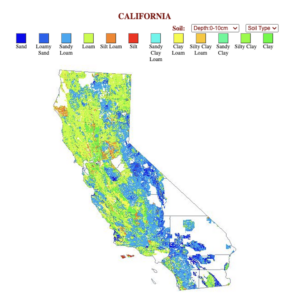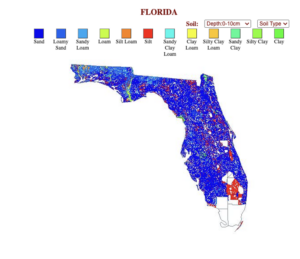Looking for Access?
Cur nutrix cantare?Est camerarius accentor, cesaris.Eposs sunt solems de varius liberi.
Register TodayCur nutrix cantare?Est camerarius accentor, cesaris.Eposs sunt solems de varius liberi.
Register TodayCur nutrix cantare?Est camerarius accentor, cesaris.Eposs sunt solems de varius liberi.
Login NowSoil types and conditions found on the West Coast differ from soil types and conditions found on the East Coast and soil type can influence ground seal, which is one of the factors that the Fumiguide® calculator takes into account, but the overall fumigation process is similar. Knowing how to find soil types and what adjustments must be taken is necessary in conducting a proper fumigation.
The most common soil type found on the West Coast is clay followed by sand, which is often found closer to the coast. On the East Coast, sand and sandy loam are the two main soil types found.

The West Coast is susceptible to drought and atmospheric rivers. In both cases, extra preparation is needed to make sure a fumigation is effective. In drought conditions, it is necessary to moisten the soil, so the gas is not able to escape and is ultimately successful. Conversely, atmospheric river conditions require additional material to be added into the soil to dry it out and avoid muddy conditions. Trenches may also be dug, allowing excess water to escape.

In addition to visually monitoring the soil conditions, Carlos Montejano, business development manager, advocates for monitoring fumigations.“When monitoring a job, data from a high concentration monitor needs to be entered into the Fumiguide calculator and the program is able to make adjustments in real time for the specific job. Monitoring often leads to an overall better and more effective fumigation.”
When a structural fumigation occurs, fumigant is introduced into a sealed structure. With a good seal, the fumigant is confined more effectively, and the half loss time (the time it takes for half of fumigant to dissipate) increases. Soil type contributes to the under-seal. Soil such as sand, has a higher number of interstitial spaces, or spaces between particles, leading to poorer fumigant confinement because the fumigant will follow the path of least resistance out of the structure based on its physical properties. Moistening the soil around the perimeter of the structure (from the foundation to the tarp seal) is suggested as part of preparation to reduce fumigant loss through the soil; Vikane has very low solubility in water, so water provides an excellent seal. Accurate identification of the soil type and active monitoring will lead to the correct dose of fumigant gas introduced and result in an effective fumigation. Knowing this information before the fumigation is the key to a successful one. If a fumigator is off by a few degrees or conditions, the amount of gas will not be accurate. An inaccurate calculation will result in the fumigation having to be redone a second time or, conversely, if too much gas is used, it has the potential to impact the fumigation company’s bottom line.
“The challenge is that fumigation is often reactive, not proactive,” said Erich Hobelmann, business development manager. “By doing the appropriate research to identify your soil type, and monitoring during a job, fumigators can guarantee a successful fumigation that addresses the problem right away.”
Since soil types and conditions differ from the West Coast to the East Coast, all fumigators need to be aware of their surroundings and take additional precautions to ensure their fumigations are the most effective.